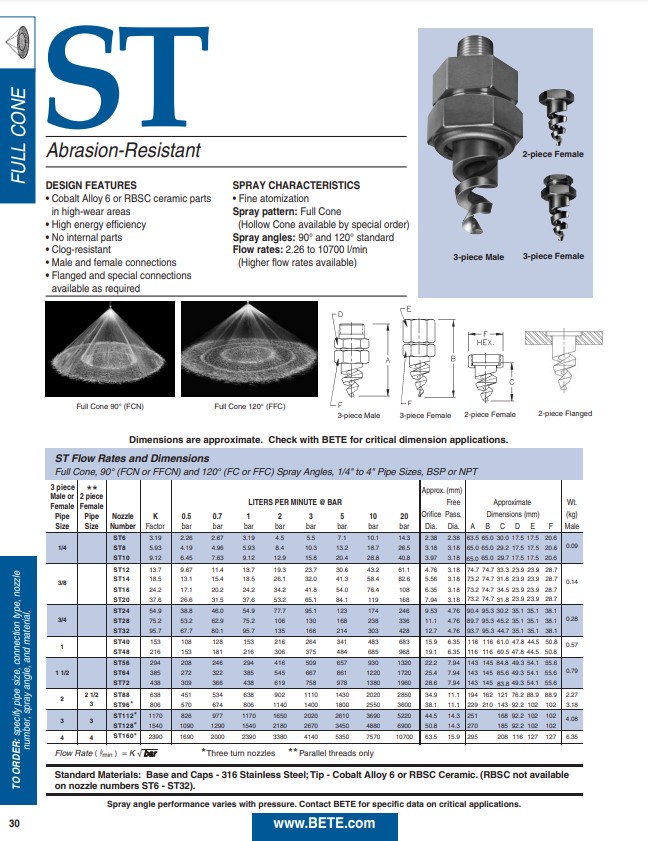BETE Clog-Resistant Pigtail Nozzles Designed to Endure Limestone Slurry
BETE ST spiral design remains one of the major advances in nozzle technology. The liquid is atomized into small droplets by a continuously descending spiral and, therefore, enters and exits with no internal restrictions through relatively large passages. The result is a higher discharge velocity so lower pumping pressures can be used to produce the required atomization.
Design Features of BETE ST Spiral Nozzles Design Features
- Designed for use with abrasive materials such as limestone slurry
- Extensive history as a wet FGD (flue gas desulphurization) absorber nozzle
- Available in Cobalt Alloy 6 or industrial ceramic (reaction bonded silicon carbide)
- Inherently clog resistant with no internal parts
- The spiral design produces a spray with more developed surface area than other nozzle styles for a given flow and pressure
- Designed by BETE, the inventor of the spiral nozzle
- Cobalt Alloy 6 or RBSC ceramic parts in high-wear areas
- High energy efficiency
- No internal parts
- Clog-resistant
- Male and female connections
- Flanged and special connections available as required
BETE ST Spiral Nozzles Spray Characteristics
- Fine atomization
- Spray pattern: Full Cone (Hollow Cone available by special order)
| Available Spray Angles | Flow Rate Range |
| 90 - 120° | 0.494 to 3710 gpm |
| Available Connection Types | Materials |
|
316 / Cobalt Alloy 6, 316 / RBSC |
BETE ST Spray Angles

BETE ST Drawings

How Spray Pattern is Achieved on BETE ST Spiral Nozzles
- The spray pattern of the spiral nozzle is formed by the fluid shearing along with the turns of the spiral, which produce multiple concentric cones. These cones form 2 to 3 bands of relatively coarse droplets surrounded by wider bands of relatively fine droplets.







